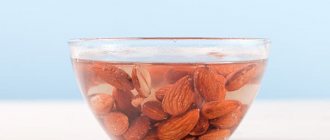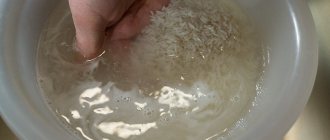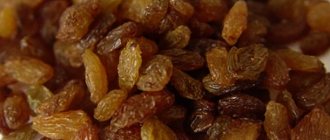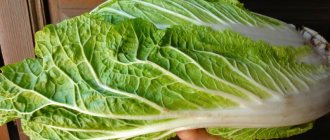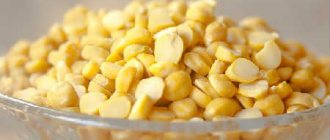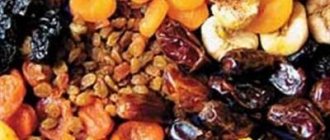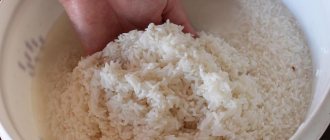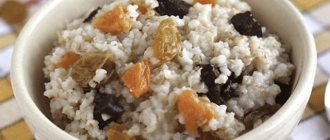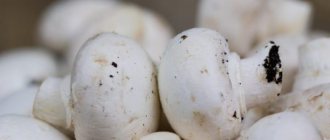(Photo: pixabay.com)
Today you can buy a wide variety of dried fruits in markets and stores. They look very appetizing and tasty, bright. But this is a mistake. Their appearance is often achieved by using large amounts of preservatives and other additives. And don’t forget about pollution. That’s why it’s so important to learn how to thoroughly rinse raisins, dried apricots and other dried fruits, which will help avoid health problems.
How to eat dried fruits correctly
Dried fruits are a very tasty delicacy and if you don’t control yourself, you can eat quite a lot of them. It is worth knowing that dried fruits have a fairly high calorie content.
For example, ordinary apricots, depending on the variety, contain from 50 to 70 calories per 100 g, and dried apricots contain 250 calories per 100 g. In addition, dried fruits have a very high sugar content.
Remember, moderation is good in everything!
Therefore, nutritionists recommend eating dried fruits in the first half of the day and not eating them whole, but adding a little to ready-made dishes, for example, to various cereals.
It is worth paying attention: dried fruits should be added to ready-made porridges, not boiling ones! Since during the cooking process there are almost no useful substances left in the fruits!
If you cook dried fruit compote, you shouldn’t expect any benefits from it, because the cooking process destroys vitamins and nutrients. That is why it is not recommended to boil dried fruits!
Dried apricots discord
But not every dried fruit will be useful. Take a closer look at what's on display. The first thing that catches your eye are the bright, beautiful orange slices, glistening appetizingly in the sun. The hand reaches out to them, but in vain.
Fruit dried naturally, without adding preservatives, cannot look so beautiful. Rich color and elasticity indicate that the workpiece was prepared using the sulfitation method. This is how the vast majority of dried fruits that reach the market are produced. Sulfitation allows you to preserve the presentation of the product, increase its shelf life and make it more attractive to the buyer.
This is what dried apricots treated with sulfur oxide look like (Photo: Naturovoexpress.ru)
During the sulfitation process, dried apricots are treated with sulfur oxide. The substance kills microorganisms and makes dried fruit “sterile”. Sulfur covers each fruit with a thin, imperceptible film and remains on it for a very long time.
Dried fruits not treated with sulfur oxide look different. They are wrinkled, dark, and cost 30 percent more than their “chemical” counterparts. It is not surprising that buyers are least interested in such products.
And this is real Uzbek dried apricots, dried in the shade without chemicals (Photo: Cstor.nn2.ru)
Dangerous peel
In addition to sulfur oxide, the product can be treated with other substances:
- liquid smoke;
- glycerin;
- dyes.
All substances pose a danger to the body. Sulfur oxide (E220) is toxic, causing severe poisoning in large doses, and a powerful allergen in small doses. Liquid smoke, which is used to achieve the appearance of sun-dried dried apricots with uneven skin color, is a carcinogen. Most often it is found in fruits harvested in Moldova, Poland and Iran, less often in Uzbekistan and Turkey.
Dark color is not a sign of environmental friendliness; liquid smoke may have been used in preparation (Photo: Fitorganic.net)
Dyes are needed to return the fruits to an attractive appearance, because during the drying process they naturally darken. And glycerin, which is often replaced with technical mineral oil, is designed to make the peel shiny, so that the product makes you want to buy it.
According to current phytosanitary standards, agricultural products infested with pests are prohibited from being imported into the territory of the Russian Federation. Unprocessed dried apricots are a risky product; insects may be found in them and not allowed to cross the border. Therefore, 98 percent of dried fruits imported from abroad are treated with sulfur oxide.
How to wash dried fruits
Let's take a closer look at the question: how to properly wash dried fruits before eating?
In order to be absolutely sure that even a small dose of poison will not enter your body along with a healthy product, purchased dried fruits must not only be washed in water, but soaked. You will now learn how to soak dried fruits correctly.
Classic method of soaking fruits
You probably want to know how to remove sulfur dioxide from dried fruits?
To do this, soak the dried fruits in warm water for about 30 minutes. During this time, the sulfur dioxide with which they are treated will dissolve and transfer to the water. We drain the contaminated water and rinse the fruits well under running water.
It is worth highlighting three common methods of preparing dried fruits for consumption.
Method No. 1
- Pour dried fruits with water at room temperature and soak for 30 minutes.
- Then rinse the fruits well with clean water.
Method No. 2
- Pour cold water over the dried fruits for 10-15 minutes, stirring them periodically during the soaking period.
- Drain the water and rinse under running cold water.
- After this, rinse thoroughly with boiling water again.
Method No. 3 - for natural dried fruits
This method is suitable for fruits that are dried naturally.
In appearance, they will be less presentable and beautiful, since during the natural drying process they lose their texture and color. However, such dried fruits do not contain chemicals or harmful preservatives. Before use, it will be enough to rinse them well with warm water.
How to wash dried apricots
Are you wondering: do you need to wash dried apricots? Regardless of whether the fruits have been treated with sulfur dioxide or not, dried apricots need to be washed.
It is important!
If you purchased natural dried apricots and know that they have not been processed in any way, then it will be enough to rinse them thoroughly under running water, thus removing any adhering dirt and dust. To be more sure, you can pour hot water over the fruits and then give them to children.
In most cases, dried apricots are treated with sulfur dioxide - outwardly they look clean, beautiful and very bright. However, to remove excess chemicals, more effort must be spent to properly wash the fruits.
First, soak the dried apricots for half an hour in water at room temperature. After this time, rinse it well under running water. Now everything is ready, and you can safely eat dried apricots.
Quite often, customers ask questions that concern them: “how to wash prunes and dried apricots” or “how to properly wash raisins and dried apricots” - it’s worth knowing that the washing methods for raisins and prunes are exactly the same as we used for dried apricots.
How to soak dried apricots correctly
Dried apricots need to be soaked in water at room temperature. The soaking time for the fruit is 30-40 minutes, or maybe longer - it depends on the softness of the dried apricots you prefer to eat. The longer it sits in water, the softer it will become.
How to properly wash raisins
Do you need to wash raisins? Of course, it needs to be washed, like any other dried fruit!
Note!
Any doctor will tell you that not every person’s body can digest and accept unwashed and solid foods.
Properly washing raisins is not difficult. Soak the berries in warm water for 30 minutes, and after this time, drain the water and rinse with cold water.
How to wash dried prunes
The universal advice is this: be sure to wash all dried fruits, or even better, soak them in water before eating! To make prunes softer, you need to soak them for 30 minutes in hot water (but not in boiling water).
How to remove glycerin from prunes?
- soak the prunes for 60 minutes in water ~20ºС;
- then rinse well under running water.
How to wash figs
Do figs need to be washed? And Uzbek, Tajik, Uzbek and Turkish figs must be washed. Figs produced in Turkey need to be soaked and washed more thoroughly and longer than dried Tajik ones, because they are processed.
Worth knowing!
If you want to make the figs soft, soak them in hot water and keep them until they get the softness you want, and then consume.
How to wash dates
Many people love dates for their excellent taste and benefits for the body. If you purchased these dried fruits at the market, you probably asked yourself the question of how to wash dates before eating and is it necessary to do so? The answer to this is unequivocal - dates need to be washed!
- we sort through the dates: exclude spoiled, too dry and damaged fruits;
- To rinse dates, you need to use a colander and a bowl of water at room temperature;
- fruits should be washed quickly and in small portions;
- Shiny dried fruits need to be washed especially carefully;
- Place the washed dates in a bowl into a colander and rinse well again under running cold water;
- To dry, use a paper or regular towel.
Note!
Never wash or soak dates in boiling water! If you do this, the delicate skin of the fruit will crack and the pulp will “boil”, after which they will become completely unpalatable.
How to wash raisins before eating or soaking?
washed raisins in a bowl and spoon
When you bought raisins and brought them home, be sure to wash them properly before serving or adding them to baked goods, salads and other dishes.
Prepare:
- hot and cold water
- sieve or colander
- container for washing
- board
- spoon for stirring
Procedure:
- Place the dry grapes in a container and add enough cold water to cover them.
- stir with your hand or spoon and drain the water
- lay it out on the board and sort it out, removing tails and debris
- pour it back into the container and fill it with hot water. Its temperature should not exceed 60-70℃
- stir with a spoon
- after 10 minutes, drain the water and discard the raisins in a colander
- leave it until all the water has drained
- dry the wet raisins with a kitchen towel and use as intended
Benefit for health
One hundred grams of raisins contain 300 calories, so thanks to them you can recharge yourself with a considerable amount of energy. It also contains a huge amount of minerals and vitamins, making dried fruits very beneficial for health. And it contains such microelements as:
- iron, which helps cope with anemia, making raisins useful for pregnant women and those who have suffered from severe blood loss;
- calcium, which strengthens bones and joints;
- antioxidants that help slow down the aging process at the cellular level and eliminate infections, which makes raisins useful for strengthening the immune system;
- potassium and magnesium, which have a beneficial effect on the functioning of the cardiovascular and nervous systems;
- boron, which promotes calcium absorption;
- glucose, which quickly satisfies hunger and replenishes energy reserves.
Contraindications for cleaning
Since even the most gentle methods of cleansing the liver with raisins are a certain stress factor for the body, there are a number of contraindications, the main of which is cholelithiasis.
Raisins have a choleretic effect, due to which harmful substances are washed out of the body. However, if there are medium or large stones in the bladder when bile comes out, they can clog the ducts or damage their walls. Thus, there is a risk of acute cholecystitis, cholangitis, or even internal bleeding.
It is also not recommended to carry out any cleansing procedures during acute diseases (for example, tuberculosis), menstruation, pregnancy and lactation. Contraindications are diabetes mellitus, increased acidity in the stomach, gastritis, the presence of ulcers in the digestive tract, as well as acute and chronic heart disease.
Tip 2: How to make puree with prunes
- For prune puree:
- 300g prunes;
- 0.5 cups sugar.
- For dessert:
- 200 g prunes;
- 200 g dried apricots;
- powdered sugar;
- cream 35% for whipping.
Prune puree
Sort through, rinse the prunes in running water, place in a bowl of such depth that the prunes occupy no more than ¾ of its volume. Pour boiling water over the prunes and let them swell for 5-8 minutes. Drain the water, carefully remove the seeds from the dried fruits, place them in a saucepan, add a small amount of cold water and cook over low heat for 8-10 minutes.
Sort the prunes, rinse thoroughly with cold water, dry, place in a deep bowl, if the prunes are hard, then pour boiling water for 3-5 minutes so that they swell a little.
How to steam raisins and make them soft for consumption?
raisins drain onto a sieve after steaming in boiling water on the stove
Alternative ways to soften store-bought raisins:
- steaming in the oven, steamer or microwave
- heating in a pan of water
In the first option, use washed raisins with a little water.
- Place dried fruits in one row, then they will steam better.
- For example, leave raisins in the microwave in a plate covered with a special lid or cling film. In the second case, leave a small hole for moisture to evaporate. Set a timer for half a minute. If the result does not suit you, add the same amount of time.
- After heating, remove the raisins and let them cool in the container they were in the microwave/oven.
- Then dry it with paper towels.
The second way to soften raisins is as follows:
- Place dry grapes, washed in cold water, in a shallow pan.
- add cold water until it is completely covered
- Turn the heat on high and bring the pot of raisins to a boil
- immediately turn off the heat and place it on the stand
- after 5 minutes, drain the contents of the pan into a colander
- leave the raisins until excess moisture has completely drained
So, we looked at ways to soften store-bought raisins before serving and adding to baked goods.
Use the advice for your benefit and let your culinary masterpieces delight your family and guests!
How to properly soak raisins in water before baking, for cakes, Easter cakes, casseroles, kutia?
raisins are soaked in a container with water before preparing kutya
. The first thing you will notice is the color of the raisins. The lighter it is, with a yellowish tint, the longer you will need to soak it in water. Since the product has been treated with sulfur, paraffin and a number of chemicals to give it its presentation, your job is to melt this film before adding it to baked goods.
- Boil water and let it cool slightly.
- Place the required amount of raisins in a container and fill with hot water. Mix everything with a spoon/wooden stick.
- Strain the contents of the container through a sieve, leaving the raisins to get rid of excess water.
- Place the product back into the container and pour in hot water to cover the raisins.
- After a quarter of an hour, repeat the action with the sieve.
- When water stops coming out of it, use the raisins for their intended purpose.
Prunes
In order for prunes to become as beneficial as possible for the body and especially for the intestines, before eating they must be soaked in cool water for half an hour. After this time, the liquid must be drained and the dried fruits rinsed under hot running water.
“Coronavirus” benefits that will be canceled in the Russian Federation on April 1 have been named
The developer of CoviVac confirmed the possibility of revaccination with the drug
Restore blood vessels after coronavirus: recommendations from a therapist
However, please note that this processing method is only suitable for prunes intended for fresh consumption (for example, to add to a salad).
If in the future the fruits will be used for cooking compote or baking, then it is better to treat it with boiling water (but also after soaking).
